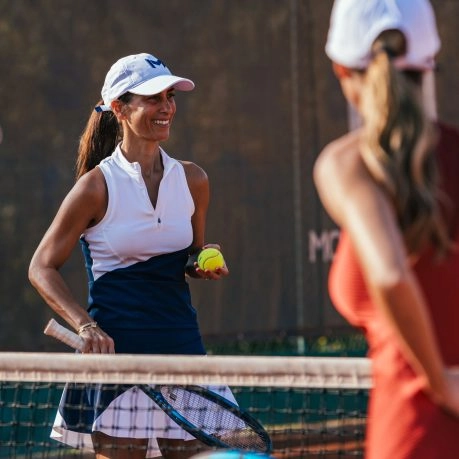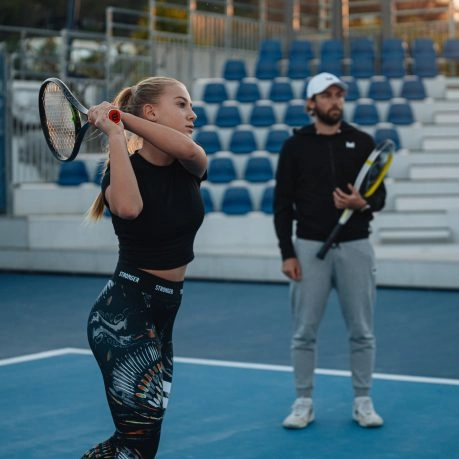Prise eastern :
The most common one-handed backhand stroke. It naturally aligns the forearm and hand, providing good preparation for impact.
To adopt it, rotate your hand 90° to the left from a forehand grip. This generates more strength and stability when striking the ball.
Experienced players can wrap their thumb around the racket for more control.





















